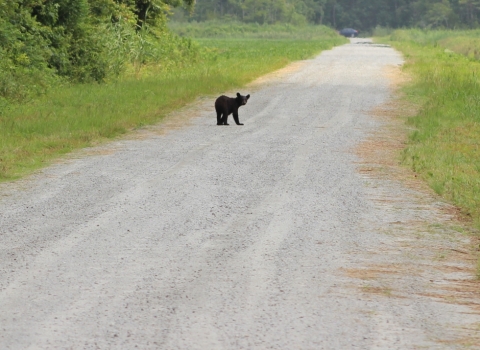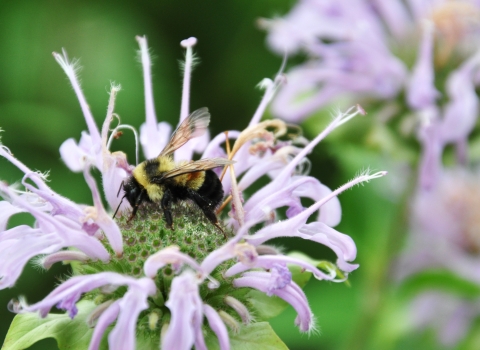On this Earth Day, folks in Alabama have a lot to celebrate thanks to a team at Cahaba River National Wildlife Refuge working to make one corner of the state a better place.
The Cahaba River is one of the most biologically diverse rivers in the United States. Numerous species’ habitats are nestled in and around the river, and it’s the backdrop for the splendid Cahaba lily that draws thousands of visitors to the refuge, especially in May. In addition, as a tributary to the Alabama River, it’s part of the Mobile River basin.
So, as waterways go in Alabama, it’s a big deal.
That’s why the refuge partnered with several conservation-minded agencies and organizations to restore the natural habitat around the river once mined by coal companies.
EARTH DAY: Find ideas to help the planet and ourselves thrive
The project will eliminate a dangerous, 80-foot-tall highwall spanning almost 5,000 feet in length; coal waste by-products; impoundments; and material remaining from previous coal mining excavations. In addition to increasing water quality both on the refuge and in the Cahaba River, the efforts will help restore the area’s topography, waterways, and native vegetation.
“The reclamation project is important, because it will minimize the continuous impact the previous mining operations had on both the land and water,” said David Butler, president of the Cahaba River National Wildlife Refuge Friends Group.
The community will benefit in other, tangible ways. More than a million people can visit the refuge, conveniently situated approximately 30 miles from Birmingham and Tuscaloosa. Every spring thousands flock to the refuge to view the stunning shoal lilies, locally known as Cahaba lilies. The flowering plant, which grows in the river, is only found in Alabama, Georgia, and South Carolina.
“The reclamation project will allow visitors the opportunity to observe the shoals from a new vantage point, which will also divert some traffic from River Trace Road, which often becomes overwhelmed during the busiest times of the season,” Butler said. “The additional access will improve the experience for both visitors who wish to observe the lilies with a short walk and those that are interested in a more immersive experience.”
Partners teaming with the U.S. Fish and Wildlife Service to make it all happen include: the Alabama Department of Labor Abandoned Mine Lands Program; the Town of West Blocton; the Friends of the Cahaba River National Wildlife Refuge; and Cahaba Riverkeeper.
Everyone plays an important role in the $8.5 million reclamation project. The Alabama Department of Labor Abandoned Mine Lands Program has already completed two phases and are now restoring the landscape in the final phase. Cahaba’s Friends Group organizes volunteer activities and educational programs on the refuge. The Cahaba Riverkeeper helped write the reclamation grant and collects water quality data while spearheading efforts to restore the iconic shoal lilies’ habitat. The Town of West Blocton is key to the annual celebration of the lily.
“We are so thankful for the support of our volunteers and each and every partner,” said Steven Trull, the refuge manager. “We have a tremendous team working to restore this beautiful landscape, improving the habitat for numerous wildlife and increasing recreational opportunities for everyone.”
Present restoration efforts will make guests’ future experiences on the refuge a far cry from past activities conducted there. In the late 1800s and early 1900s what is now the refuge was the hub of a lucrative mining operation.
"The coal in the Cahaba coal field was high quality coal that could be used in both heating and steel production, making it especially valuable to the growing steel industry in Birmingham,” Butler said.
While it may have been a profitable business, which provided jobs and created a thriving community, it was also dangerous. Miners worked in sub-par conditions, faced health hazards, and died in fatal explosions. The environment also suffered.
"Early mining operations were not known for environmental stewardship,” Butler said. “The impact to the land was substantial, an impact that long outlived the mines. This reclamation project is pivotal to enhancing the recreational opportunities at the Cahaba River National Wildlife Refuge, while also providing demonstrable water quality benefits for the Cahaba River and the rich aquatic and terrestrial biodiversity found at the refuge.”
Habitat restoration and more opportunities to hike, hunt, fish, hike, paddle, and swim are the result of strong partnerships like those at Cahaba River National Wildlife Refuge.
Those partnerships are worth celebrating every day, especially on Earth Day.



